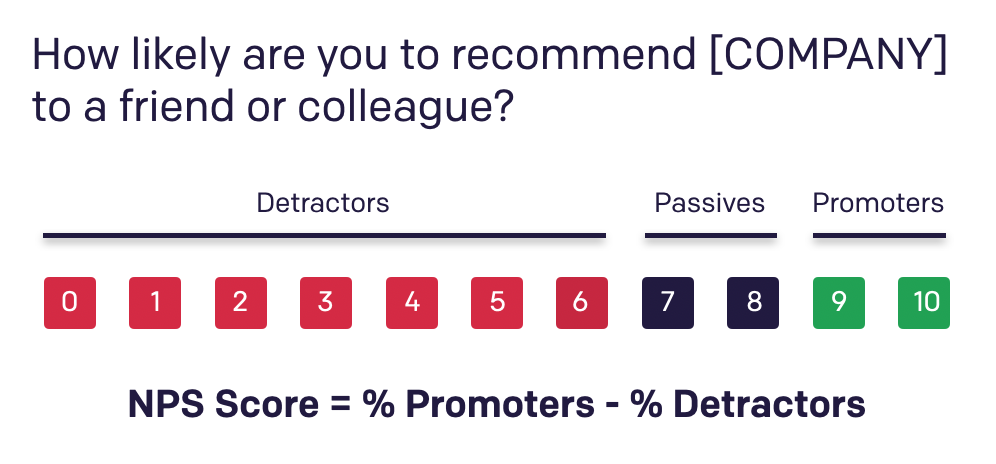Net Promoter Score
How does it work? Promoters, Passives, and Detractors, explained.
Net Promoter Score (NPS) is a metric that is intended to measure a product or service’s customer experience, which is based on the single question: “How likely are you to recommend[Company] to a friend or colleague?”
Note: If the term colleague in the question doesn't fit your customer base, you can use a family member as a substitute.
The NPS question uses a 0-10 scale, where 0 = Not at all likely and 10 = Extremely likely.

Study participants who give a rating of 0-6 are known as Detractors. These are customers who would not recommend your product and may even speak negatively about it to others.
Those who give a rating of 7-8 are known as Passives. These are customers with positive feelings, but who aren't strong enough advocates to actively recommend your product.
Study participants who give ratings of 9-10 are known as Promoters, those who are most likely to recommend your product to others.
The goal is to maximize your Promoters and minimize Detractors. As such, the Net Promoter Score is calculated by taking the percentage of study respondents who give a rating of 9 or 10 and subtracting the percentage who give a rating of 0 - 6. Those who give a rating of 7 or 8 are excluded from the calculation. Your resulting score can range from -100 to 100.
Updated about 1 month ago
